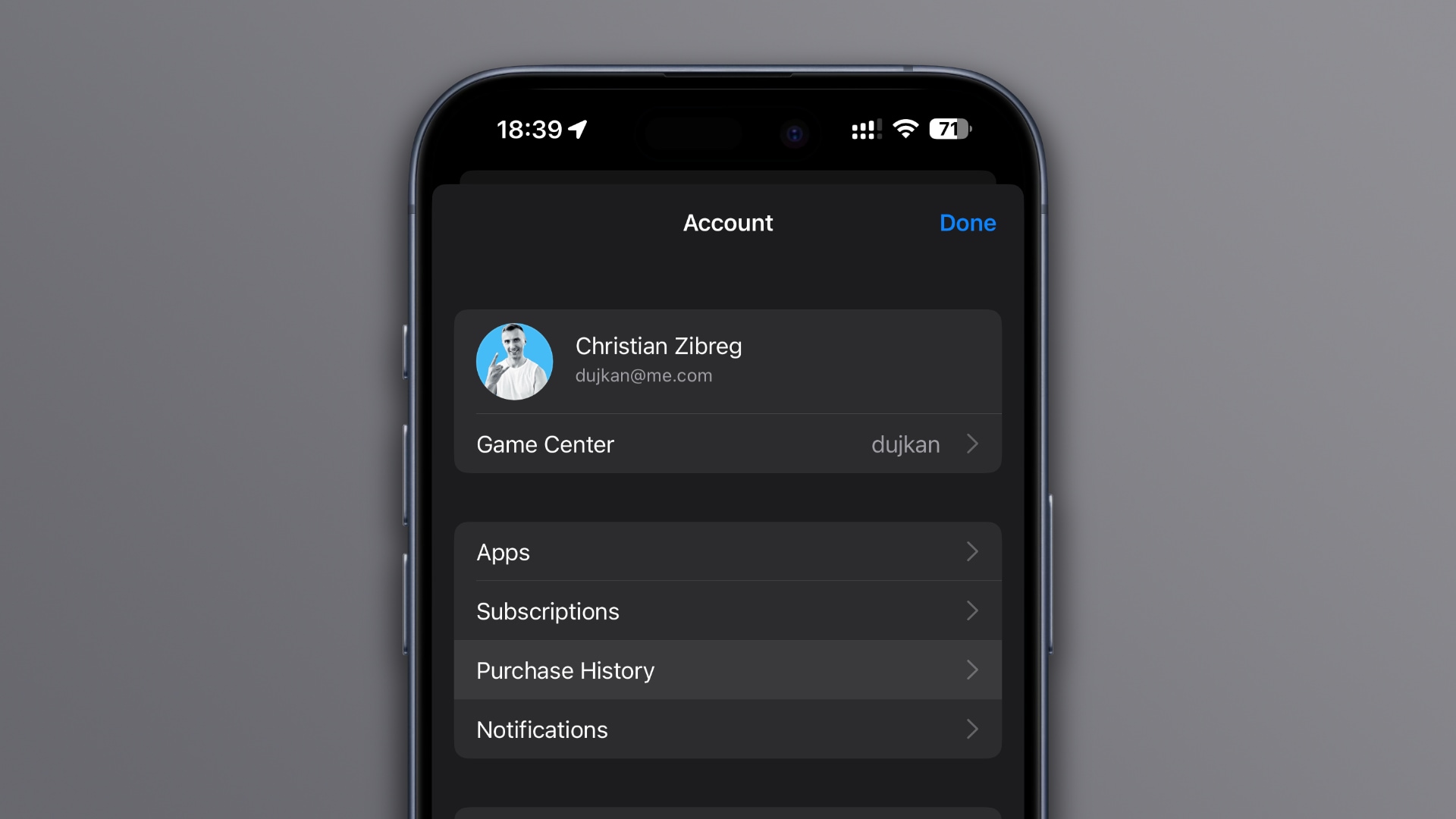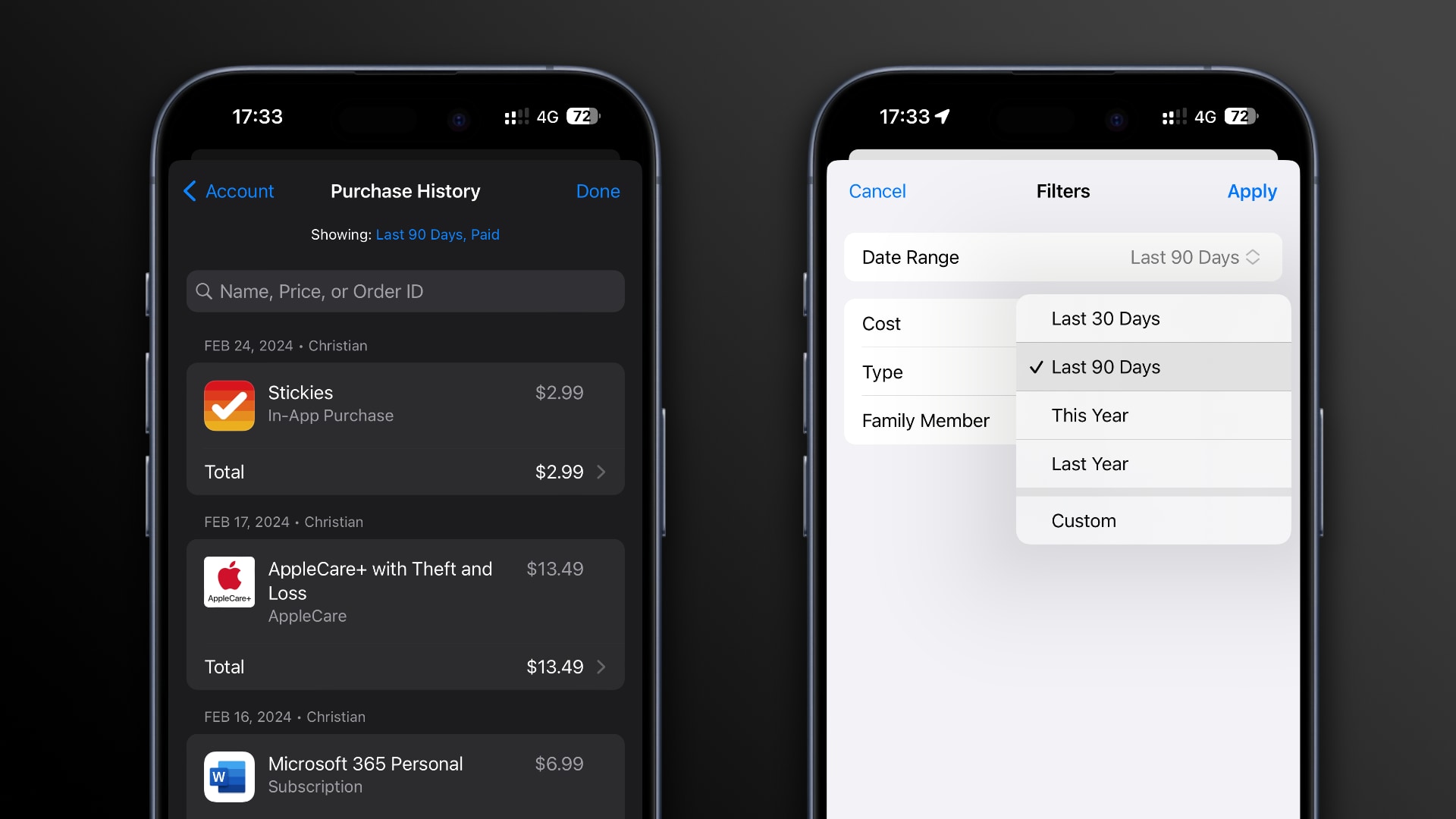iOS 17.4 lets you access your purchase history a bit faster via the App Store instead of having to dig several menus deep in the Settings app, like before.

Just hit your profile image in the App Store app on your iPhone or iPad, then choose Purchase History and authenticate with Face ID or Touch ID. That’s it!
Before iOS 17.4, you had to touch your Apple ID profile image in the Settings app, then navigate to Media & Purchases > View Account and authenticate with Face ID or Touch ID before you could select Purchase History. That’s two taps for the App Store method versus four for Settings. A usability win!
iOS 17.4 simplifies getting to your purchase history
Your purchase history in iOS 17.4 still includes digital items you’ve bought across your devices, including iCloud and Apple TV subscriptions, in-app purchases, third-party subscriptions and more. Just like before.

And yes, you can still filter out unwanted items based on criteria such as purchase period, cost, type, item type, etc. In other words, nothing has functionally changed in your purchase history on iOS 17.4, the only difference being that you can now get to it faster through the App Store than the Settings app.
For those wondering, the Apps section is where you browse all the apps you’ve downloaded so far across all your devices signed into the same Apple ID (both free apps and paid ones). And if you hit the Not On This iPhone tab at the top of the list, you will only see the apps that are currently installed on this device.
iOS 17.4 brings changes for users in Europe
iOS 17.4 brings changes for users in the European Union as part of Apple’s compliance with the Digital Markets Act, including support for alternative app stores and payment methods, among other concessions.
People in the European Union will probably be served a different iOS 17.4 build from the rest of the world, and any EU-specific features should be listed in the official notes for the iOS 17.4 version that Apple will release to customers in Europe.